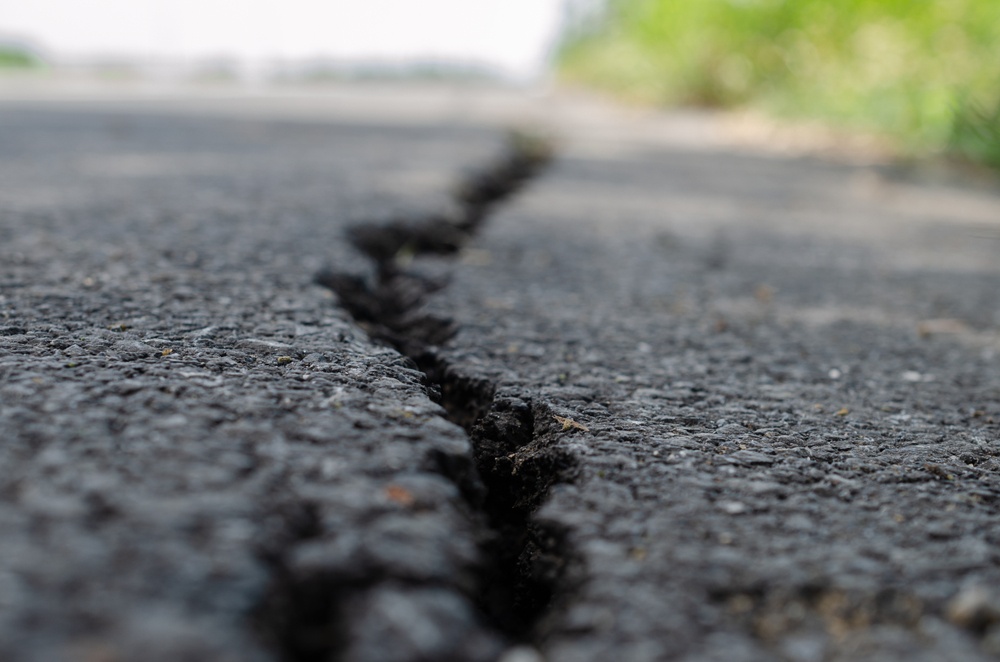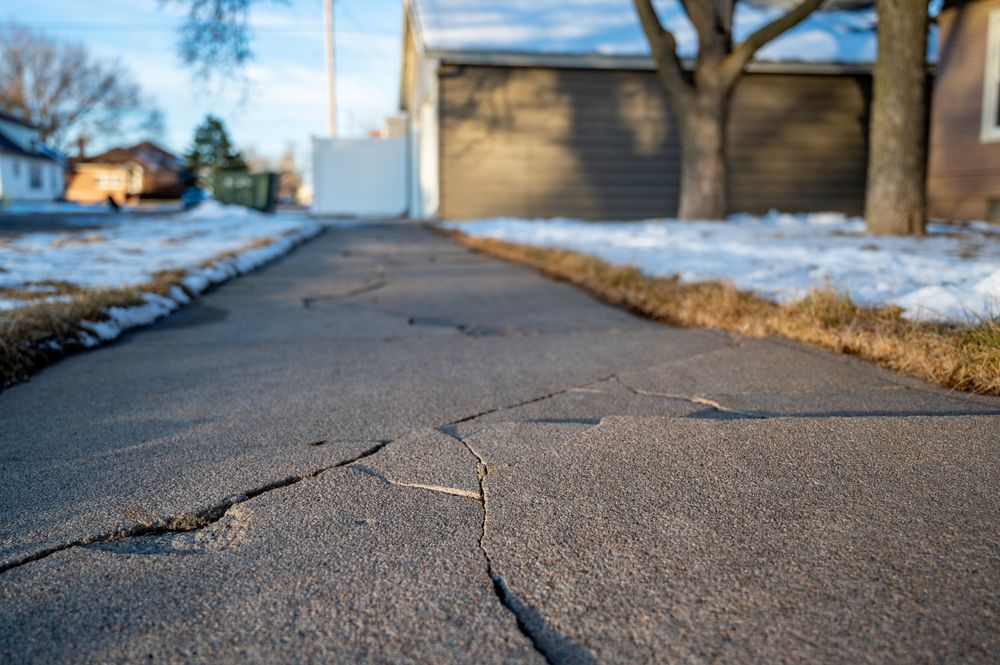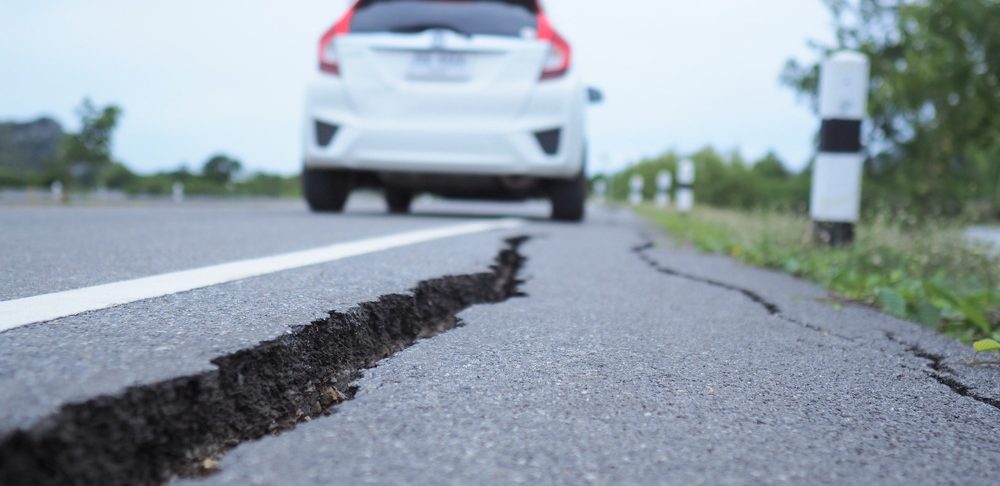Concrete is durable, cost-effective, and environmentally friendly. However, this building material may also crack even after freshly pouring it, making you wonder if you’ve done something wrong or if the product is substandard.
So, what causes concrete to crack? Concrete may crack due to excess water, shrinking, freezing, swelling, steel reinforcement corrosion, absence of control joints, and overloading. Tiny concrete cracks hardly affect a structure. However, those thicker than 0.3mm are unacceptable, and you should fix them immediately.
Although concrete is strong, resilient, and versatile, there are various reasons that might cause it to crack. Luckily, you can avoid this inconvenience and prevent future concrete cracks by following these tips.
Common Reasons Why Concrete Cracks

There are several factors that may cause concrete to crack on sidewalks, garage floors, steps or stoops, and more. These include:
Excess Water
Watering down concrete is one of the leading causes of cracking. Adding excess water to the concrete mix makes concrete easier to install. However, it also reduces the concrete’s strength, making it weak and easy to crack. Moreover, excess water means the concrete will shrink exceedingly during hardening, increasing the cracking chances.
Shrinking
Concrete is subject to shrinking after being poured due to climate, volume, and temperature changes. Shrinkage occurs during the hardening process for months or even years. You can control it by correctly placing steel reinforcements.
Freezing
If you haven’t applied a protective layer on your concrete mix, then it will be susceptible to more cracks after every winter. The moisture in concrete freezes or hardens during the cold seasons, exerting pressure on the material, thus causing it to crack.
Swelling
Swelling creates internal forces on the concrete, causing it to break. Concrete may swell due to compounds, such as sulfates, present in the soil in contact with the structure. These salts combine with the illuminate in concrete, producing an element that causes it to swell.
Oxidation of steel reinforcement is another cause of concrete swelling. Additionally, open cracks can worsen this situation as they allow for air entry into the concrete.
Steel Reinforcement Corrosion
Although concrete’s alkaline nature protects steel reinforcements, they are still prone to rusting in certain conditions. If the rust volume exceeds that of the reinforcements, the concrete suffers tensile forces, which can lead to cracking.
Absence of Control Joints
Concrete is prone to cracking due to various factors, some of which are uncontrollable. Control joints allow cracks to form where you prefer, avoiding unexpected situations. Remember, joints shouldn’t exceed three times the concrete thickness.
Overloading
You should calculate concrete mix portions or slabs and the number and sizes of reinforcement bars before building for perfect results. Overloading any of these elements will cause tensile tensions in the structure hence cracking and breaking.
Types of Concrete Cracks
Concrete cracks come in many forms, including:
Thermal Cracks
Changes in temperature and moisture will cause concrete to form thermal cracks. The concrete doesn’t allow free movement during contraction and expansion, generating tensile forces.
Thermal cracks are more prevalent after pouring, during the concrete hardening period. This is because heat is produced as the concrete reacts or combines with water, leading to expansion. These cracks are full-depth, which can be pretty dangerous.
Drying Cracks
Drying shrinkage cracks form after the hardening process. Concrete reduces in size as the water in the mix evaporates. The more water you use, the higher the shrinkage severity. These cracks are also pretty deep and may appear as a map, pattern, or transverse.
Flexural Cracks
Flexural cracks form after reinforcement and hardening. These cracks form on tension spots and grow to their axis. They are vertical and widest at the center of flexural members, or the steel reinforcements. Additionally, flexural cracks are disastrous as they indicate concrete bending, which may collapse a structure.
Plastic Shrinkage Cracks
Plastic shrinkage cracks are the shortest compared to the others discussed above. These cracks are frequent in slabs and form a few hours after placement, when the concrete is still wet or plastic. This is due to surface shrinkage, which is expected if you pour the concrete when it’s sunny and hot.
Settling Cracks
Settling cracks form when the ground beneath the concrete creates a void and the slab collapses. This could happen if a tree’s roots decompose or a trench is dug beneath the concrete.
Of course, you could try to fill in the cracks by sealing them, but in some cases, this will only prolong the inevitable. Which means it might be time to replace your old concrete.
How Do You Prevent Concrete Cracks?
When placed correctly, concrete has a beautiful, flawless finish. Below are some tips on how to prevent cracks when using concrete:
Add Control Joints
Concrete is susceptible to cracking due to natural soil movements and temperature changes which cause evaporation and freezing. Therefore, you should add control joints when building, so the cracks form where you anticipate them to. Control joints redirect cracks as they are the weakest spots in the concrete.
You can create control joints in various ways. Here are some examples:
- You can form them using a grooving tool when the concrete is still plastic wet.
- You could use flexible expansion wooden joint strips while you pour the concrete.
- You can use a circular saw with a blade to cut the slabs the day after placement, if you prefer working with hardened concrete.
Cure the Concrete
Curing is vital to ensure concrete doesn’t crack. This building material must retain moisture during hardening to reach its optimal strength and avoid cracking. Therefore, sprinkle some water on the concrete for the first week daily.
Cover the concrete with polythene sheeting or an insulating blanket during the first seven days, if the temperatures are below 50 degrees Fahrenheit. This is vital to prevent the concrete from freezing, which may lead to cracking. You could eliminate all this struggle by hiring a trusted company like Richfield Concrete for their maintenance services.
Compact the Concrete Base
It’s advisable to have a compacted base before you mix up all concrete elements. An uneven base will settle with time, causing the concrete slab to cave in and crack. Gravel is the best for creating a compact base.
Your mode of excavating also determines if the concrete will crack or not. Don’t dig out a lot of soil, creating more space than you require to fill up with gravel and concrete. The slab will soon cave in or settle, causing it to crack.
Compacting a concrete base can be difficult if you don’t have the right tools. Therefore, to make life easier, contact reliable concrete professionals like Richfield Concrete to compact and place your concrete.
Add Reinforcements
Adding reinforcements makes concrete stronger, preventing cracks. If you are building a walkway, place reinforcement bars with grids halfway through the concrete.
However, you can use wire mesh as you pour in the concrete when creating decorative items like concrete vases. Remember to keep the enforcements at the concrete center so they aren’t visible after completion.
Use Concrete For Your Next Construction Project

There are multiple factors that can cause concrete to crack. That is why it is important to understand all the causes and how to avoid them when using concrete. For the best concrete results when laying concrete, follow all the tips provided in this post and contact Richfield Concrete today to do the job for you. Our team of experts will be happy to lay down a beautiful slab of concrete for your construction project.




